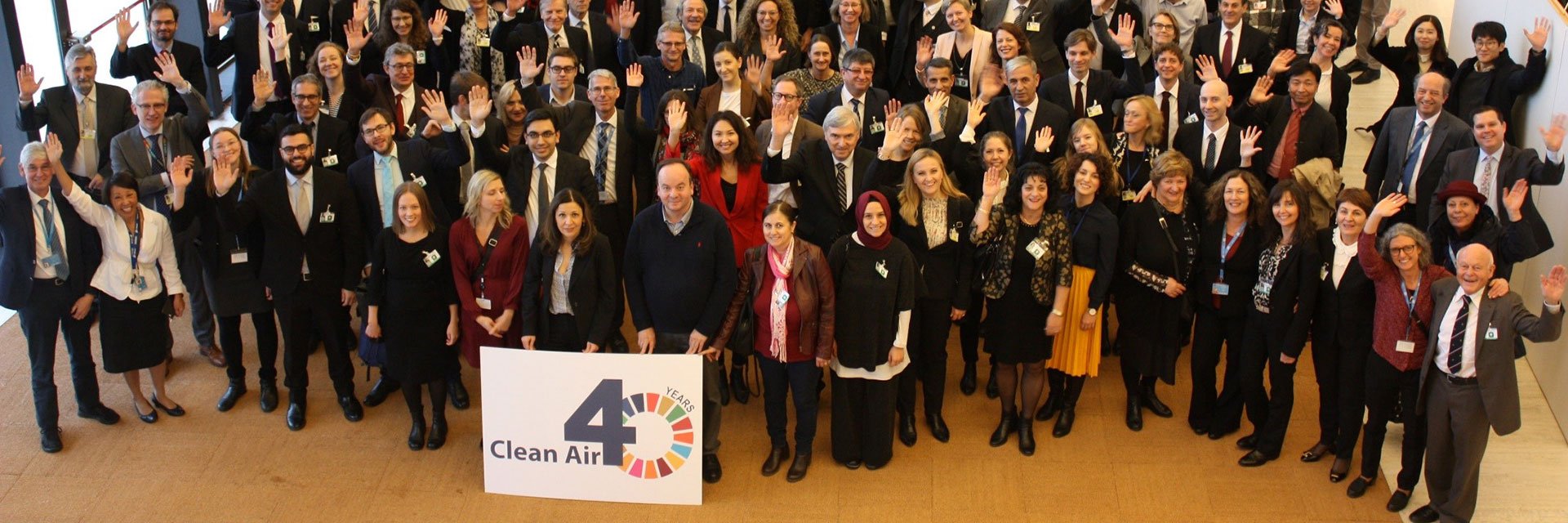
Working together to reduce airborne pollution
The United Nations Convention on Long-Range Transboundary Air Pollution, CLRTAP, commonly called the Air Convention, is aimed at reducing emissions from long-range transboundary air pollution.
The Air Convention is a regional convention for Europe, the United States, Canada, and countries in the Caucasus and Central Asia. It was adopted in 1979 and entered into force in 1983. The convention provides access to emission, measurement, and modelling data, as well as information on how air pollution affects ecosystems, health, crops, and materials. Sweden is represented in the convention by the Swedish EPA.
International cooperation necessary
The start of the Air Convention dates back to the 1970s, when Swedish and Norwegian scientists could present evidence for a direct connection between sulphur compounds in central Europa and acidified lakes in Scandinavia. Over time, the scientists also proved that emissions can be transferred by winds over long distances, up to thousands of kilometers, and then be emitted as acid rain or snow at another location far away.
These insights initiated the need for international cooperation on reducing the harmful environmental effects that acidification and overfertilization have on forests and other vegetation. Over the years, the knowledge about airborne pollution has increased and today, the convention’s work also focuses on the negative effects on human health.
Eight protocols on goals and actions
The Air Convention has eight protocols to which parties have undertaken to limit their emissions of sulphur, nitrogen oxides, heavy metals, and volatile organic compounds. Sweden has ratified the convention and all protocols.
All eight protocols:
- The Protocol on Long-term Financing of the Cooperative Programme for Monitoring and Evaluation of the Long-range Transmission of Air Pollutants in Europe (EMEP protocol). Signed in 1984 and entered into force in 1988.
- The Protocol on the Reduction of Sulphur Emissions or their Transboundary Fluxes by at least 30 percent. Signed in 1985 and entered into force in 1987.
- The Protocol concerning the Control of Emissions of Nitrogen Oxides or their Transboundary Fluxes. Signed in 1988 and entered into force in 1991.
- The Protocol concerning the Control of Emissions of Volatile Organic Compounds VOCs) or their Transboundary Fluxes. Signed in 1991 and entered into force in 1997.
- The Protocol on Further Reduction of Sulphur Emissions. Signed in 1994 and entered into force in 1998.
- The Protocol on Persistent Organic Pollutants (POPs). Signed in 1998 and entered into force in 2003. It was revised in 2009 and the amended protocol entered into force in 2022.
- The Protocol on Heavy Metals. Signed in 1998 and entered into force in 2003. It was revised in 2012 and the amended protocol entered into force in 2022.
- The Protocol to Abate Acidification, Eutrophication and Ground-level Ozone (the Gothenburg protocol). Signed in 1999 and entered into force in 2005, as the most comprehensive protocol for national emission ceilings of sulphur dioxide, nitrogen oxides, VOCs, and ammonia. It was revised in 2012 and the amended protocol entered into force in 2019. The current version also includes fine particles, PM2.5. The emission ceilings have been replaced by commitments for national emission reductions to 2020 and beyond. In addition, certain emission limit values have been updated and tightened. The Gothenburg protocol is the first legally-binding agreement containing obligations to reduce the broader spectrum of short-lived climate pollutants, including ground-level ozone precursors and black carbon.
Annual Swedish reports to the Air Convention
Every year, Sweden compiles and reports data on air pollution emissions to the convention.
Contact and more information
Do you want to know more about the Air Convention? Send an email to Petra Hagström, petra.hagstrom@naturvardsverket.se